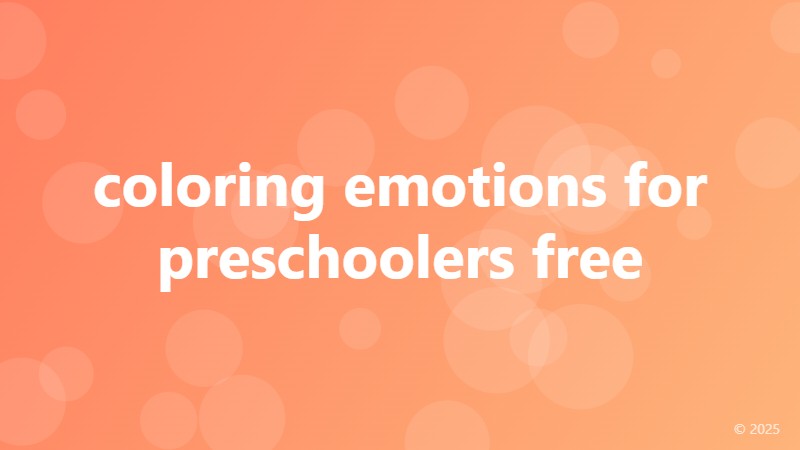coloring emotions for preschoolers free

Unlocking Emotional Intelligence in Preschoolers through Coloring
Coloring is more than just a fun activity for preschoolers – it's a powerful tool for emotional intelligence development. As children explore different colors and express themselves through art, they learn to identify, understand, and manage their emotions. In this article, we'll delve into the concept of "coloring emotions" and provide you with free resources to get started.
What are Coloring Emotions?
Coloring emotions is an innovative approach that combines art therapy and emotional intelligence. It involves using different colors to represent various emotions, such as happiness, sadness, anger, and fear. This technique helps preschoolers develop self-awareness, recognize emotional patterns, and build empathy towards others. By coloring emotions, children can express their feelings in a healthy and constructive manner.
Benefits of Coloring Emotions for Preschoolers
Coloring emotions offers a wide range of benefits for preschoolers, including:
- Enhanced emotional intelligence: Preschoolers learn to identify and understand their emotions, developing empathy and self-awareness.
- Improved communication skills: Children express their feelings through art, developing their communication skills and confidence.
- Emotional regulation: Preschoolers learn to manage their emotions, reducing anxiety and stress.
- Boosted creativity: Coloring emotions encourages creativity, imagination, and self-expression.
Free Resources for Coloring Emotions
Get started with coloring emotions today! Here are some free resources to help you:
- Download our free coloring emotions printable, featuring 10 different emotions and corresponding colors.
- Explore our Pinterest board, dedicated to coloring emotions and emotional intelligence in preschoolers.
- Check out our recommended reading list, featuring books on emotional intelligence and art therapy for children.
Tips for Implementing Coloring Emotions in Your Preschool Classroom
To make the most of coloring emotions in your preschool classroom, follow these tips:
- Create a calm and comfortable atmosphere, encouraging children to express their emotions freely.
- Use a variety of art materials, such as crayons, markers, and paint, to stimulate creativity.
- Encourage children to share their artwork and discuss their emotions, fostering empathy and understanding.
- Make it a regular activity, incorporating coloring emotions into your daily or weekly routine.
By incorporating coloring emotions into your preschool classroom, you'll be providing your students with a valuable tool for emotional intelligence development. With our free resources and expert tips, you're just a step away from unlocking the full potential of your little learners!